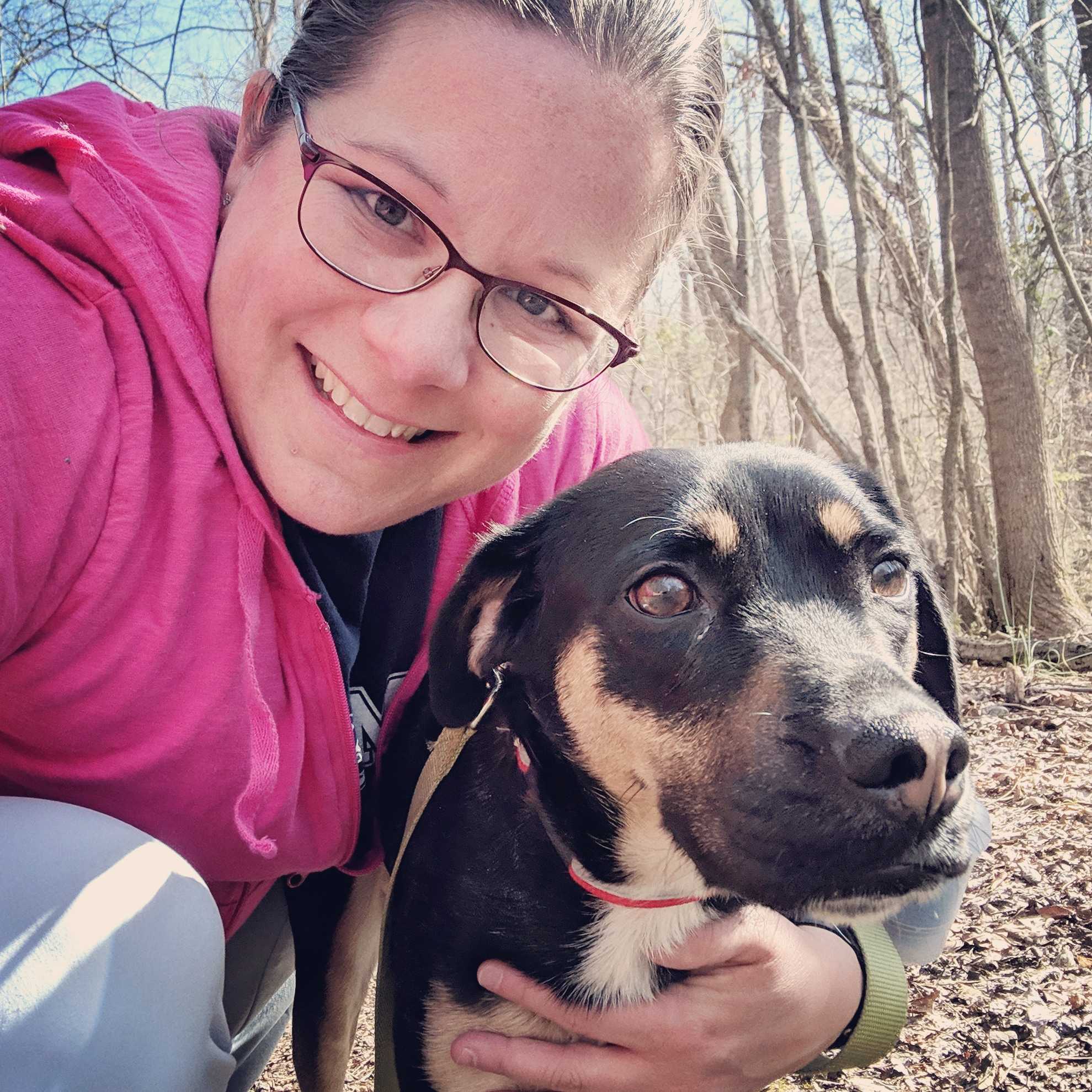Dog flu: A vet's guide to symptoms, causes and treatment
Dog flu, or canine influenza, is a highly contagious virus. Is your dog at risk?

Dog flu, also known as canine influenza, is a virus that you may have never heard of - unless you are having an outbreak in your area.
This virus was first discovered in 2004, when it caused an outbreak of severe respiratory disease in Florida racing Greyhounds. Unlike many other canine respiratory diseases, which tend to always circulate throughout the United States, dog flu tends to occur as isolated outbreaks.
An area may go many years without any reported cases, then a large number of cases occur within a relatively short period of time. As of 2021, dog flu has been documented to have occurred in 46 states. Recent outbreaks have involved California, Florida, Indiana, New York, Ohio, Pennsylvania, South Carolina, and Texas.
If you're concerned that your dog may be suffering from dog flu, this article will outline common symptoms and causes, as well as looking at treatments and prevention for the virus.
What causes canine influenza?
Canine influenza is a highly transmissible virus. Infected dogs shed large amounts of the virus through sneezing, coughing, and nasal discharge. This virus can also easily be spread on a variety of surfaces, including walls, floors, collars, brushes, and even human hands. The virus can remain infectious for up to 48 hours in the environment, causing infection in any dogs who come in contact with contaminated surfaces.
Canine influenza outbreaks are most common in dogs that are housed in close quarters. Dog shows, boarding kennels, doggie daycares, grooming facilities, animal shelters, and veterinary hospitals have all been involved in canine influenza outbreaks. Outbreaks are often localized to a particular geographic area; a given community or state may experience a significant outbreak, while surrounding areas report very few cases.

Symptoms of canine influenza
The signs of canine influenza are similar to the signs of flu in humans:
Get the best advice, tips and top tech for your beloved Pets
- Cough
- Fever
- Nasal discharge (less commonly)
- Decreased appetite (in severe cases)
- Lethargy (in severe cases)
- Trouble breathing (in severe cases)
A cough is the most prominent sign in most dogs, and this cough may range from a dry cough to a moist, productive cough.
In most cases, canine influenza is indistinguishable from other sorts of “kennel cough” (upper respiratory infections) in dogs. However, some strains of canine influenza are associated with more severe infections.
In severe cases, dogs may experience decreased appetite, lethargy, and even trouble breathing. Fatal infections are rare, but can occur.
Can I get the flu from my dog or vice versa?
Fortunately, dog flu is not a zoonotic virus. This means that the virus is not capable of spreading between dogs and humans. Humans and dogs are each infected with unique, species-specific strains of influenza virus.
You cannot give your dog a human strain of the flu, even if you cuddle together while you are sick with the flu. Similarly, your dog cannot give you dog flu. Although human flu and dog flu are closely related, these particular flu viruses are not transmissible across species.
When to take your dog to the vet

There’s no NHS for pets. Veterinary care can be eye-wateringly expensive and most pets will need treatment for an illness or injury at some point in their life. It’s difficult to think about your animals being hurt or unwell, but you need to ask yourself: what would you do if you were faced with a vet bill for hundreds or thousands of pounds?
Any time your dog develops signs of an upper respiratory infection or other illness, you should visit your veterinarian. Your veterinarian is familiar with your dog’s health, as well as with disease outbreaks that may be occurring in your community.
Your veterinarian will begin by performing a thorough physical exam. They will listen to your dog’s lungs closely, looking for evidence of pneumonia, and assess your dog’s overall health. If your pet is showing signs of respiratory distress, your veterinarian will also likely recommend radiographs (x-rays) of your dog’s chest and blood tests to rule out other underlying illnesses.
Depending on your dog’s condition and disease prevalence in your community, your veterinarian may recommend performing a canine respiratory disease panel, to definitively determine the cause of your dog’s upper respiratory signs.
These tests can be expensive and do not always change the course of treatment for a particular illness, so most veterinarians only recommend them if they feel that the cost of the testing is justified for a particular patient or outbreak.

Veterinary treatments for canine influenza
Treatment depends on the severity of your dog’s illness and any underlying diseases that your dog may have.
Mild cases may be treated on an outpatient basis, with an oral cough suppressant and oral antibiotics (to address secondary bacterial infection). More severe cases may need to be hospitalized for intravenous (IV) fluid therapy, injectable antibiotics, and other monitoring or treatments, as indicated.
Home treatments for canine influenza
If your dog is discharged from your veterinarian for home treatment, there are a number of things you can do at home to help your dog recover more smoothly:
- Isolate your dog from other dogs for several weeks
- Keep your dog in a warm, dry area
- Ensure that your dog is drinking enough water
- Ensure that your dog is eating well. (You may need to offer canned food or something a little more tasty than your dog’s regular diet.)
- Monitor your dog’s breathing and overall attitude.
It’s important to monitor your dog closely during recovery, to make sure their condition does not worsen. Contact your veterinarian immediately if your dog begins to experience worsening signs of illness.
Preventing dog flu
The most effective means of preventing dog flu is to avoid contact with infected dogs. Unfortunately, this isn’t always a practical option! Therefore, dogs that are at high risk of infection should be vaccinated against canine influenza.
Although this vaccine does not completely prevent infection, it will minimize the severity of symptoms and shorten the duration of illness for dogs that become infected. If your dog is frequently in contact with other dogs (at boarding kennels, grooming facilities, or other locations), talk to your veterinarian to determine whether the canine influenza vaccine is appropriate for your dog.

What's my dog's chances of developing dog flu?
As a dog owner, it’s important to honestly assess your dog’s risk of developing dog flu. A dog that remains mostly at home, has an in-home pet sitter when their owners travel, goes for solo walks that do not involve contact with other dogs, and only sees the veterinarian for twice-yearly exams is probably at a low risk of developing canine influenza.
On the other hand, if your dog regularly goes to doggie daycare, a grooming facility, or boarding kennel, your dog may be at higher risk. Talk to your veterinarian to determine whether your dog should be vaccinated against canine influenza. Regardless of your dog’s risk level or vaccination status, be sure to schedule a veterinary visit if your dog shows signs of an upper respiratory infection
Dr. Barnette is a graduate of the University of Florida, where she received both her B.S. in Zoology and her Doctor of Veterinary Medicine (DVM). She has 15 years of clinical experience as a small animal veterinarian, treating dogs, cats, and occasional exotic patients. She now works as a freelance veterinary writer, creating educational content for veterinarians, veterinary team members, and dedicated pet owners. Dr. Barnette lives in southwest Florida with her husband and daughter (plus two cats, a dog, and a rescued dove!) and enjoys kayaking, biking, and hiking. Learn more about Dr. Barnette at www.linkedin.com/in/catherinebarnette.

